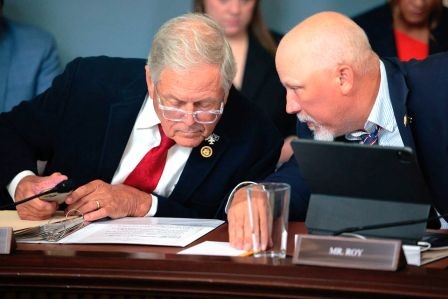The political world is abuzz with one pressing question: when is Trump signing the big beautiful bill? After weeks of heated debate, marathon sessions in Congress, and a flurry of last-minute negotiations, President Donald Trump’s signature legislative achievement—officially known as the “One Big Beautiful Bill”—is set to become law. Here’s the latest, verified information on the status, contents, and next steps for this historic bill as of July 4, 2025.
Key Point Summary
- The “One Big Beautiful Bill” passed both the House and Senate by razor-thin margins.
- The bill features sweeping tax cuts, major increases in border security funding, and deep reductions to Medicaid and food assistance programs.
- President Trump is expected to sign the bill on July 4, 2025, marking a major win for his administration.
- The legislation has sparked intense debate, with Republicans touting economic growth and Democrats warning of severe impacts on social safety nets.
When Is Trump Signing the Big Beautiful Bill? The Timeline
The question on everyone’s mind—when is Trump signing the big beautiful bill?—has a clear answer. After the House of Representatives gave final approval to the bill in a narrow 218-214 vote on July 3, the legislation was immediately sent to the White House. President Trump is scheduled to sign the bill into law on July 4, 2025, aligning with Independence Day celebrations and fulfilling his public pledge to have the bill enacted by this symbolic deadline.
This timing is no coincidence. The Trump administration and congressional leaders have repeatedly emphasized their intent to deliver this legislative victory to the American people on the nation’s birthday, framing it as a renewal of American prosperity and strength.
What’s Inside the Big Beautiful Bill? Major Provisions and Impacts
The “One Big Beautiful Bill” is one of the most comprehensive pieces of legislation in recent history, spanning nearly 1,000 pages. Its key features include:
- Permanent Extension of 2017 Tax Cuts: The bill locks in the tax reductions from Trump’s first term, making them permanent for individuals and businesses.
- No Tax on Tips, Overtime, or Social Security: Workers will see their earnings from tips and overtime exempted from federal taxes, alongside Social Security benefits.
- Expanded Child Tax Credit: Families will benefit from a larger, more accessible child tax credit.
- Border Security and Immigration Enforcement: The bill allocates tens of billions of dollars for new border infrastructure, expanded immigration detention centers, and increased personnel.
- Military and Energy Spending: There are significant boosts in funding for the military and for domestic energy production.
- Cuts to Social Programs: To offset the cost of tax cuts and new spending, the bill slashes funding for Medicaid and the Supplemental Nutrition Assistance Program (SNAP), also known as food stamps.
Table: Key Provisions at a Glance
| Provision | Details |
|---|---|
| Tax Cuts | Permanent extension of 2017 tax law |
| No Tax on Tips/Overtime | Exemption for workers’ extra earnings |
| Child Tax Credit | Expanded and more accessible |
| Border Security | $45B+ for infrastructure, detention centers |
| Military/Energy Spending | Major increases |
| Medicaid & SNAP Cuts | Deep reductions to social safety nets |
Political Battle Lines: Supporters and Critics Speak Out
Supporters’ Perspective
Republican leaders and the Trump administration have hailed the bill as a transformative step for the U.S. economy. They argue that the big beautiful bill delivers the largest middle-class tax cut in American history, fuels job growth, and secures the nation’s borders. “This is the biggest legislative win of President Trump’s two terms,” declared White House Press Secretary Karoline Leavitt, promising that the bill will “usher in the Golden Age of America.”
Critics’ Concerns
Democrats and some moderate Republicans have fiercely opposed the bill, warning of dire consequences for vulnerable Americans. House Minority Leader Hakeem Jeffries used a marathon “magic minute” speech to denounce the legislation, highlighting projections that millions could lose health coverage and that the bill will add over $3 trillion to the national deficit. Independent budget analysts estimate that 11.8 million people could lose Medicaid coverage and that the bill’s tax cuts disproportionately benefit wealthy individuals and corporations.
What Happens Next? The Signing Ceremony and Beyond
With the bill now on President Trump’s desk, all eyes are on the White House for the official signing ceremony. The event is expected to be highly publicized, coinciding with Independence Day festivities and featuring remarks from the president and key congressional leaders.
After the bill is signed, implementation will begin immediately. The Treasury Department and other agencies are preparing to roll out new tax guidelines, while the Department of Homeland Security is set to ramp up border security initiatives.
What to Watch For
- Immediate economic impact: Look for reactions from financial markets and business leaders as the new tax laws take effect.
- Legal challenges: Advocacy groups are already preparing lawsuits to block some of the bill’s provisions, particularly those affecting Medicaid and SNAP.
- Political fallout: The bill’s passage sets the stage for fierce debate in the run-up to the 2026 midterm elections, with both parties seeking to leverage its impacts for political gain.
Conclusion
The answer to when is Trump signing the big beautiful bill is clear: President Trump will sign the landmark legislation on July 4, 2025, marking a pivotal moment in his presidency and in U.S. political history. Whether you see it as a triumph for economic growth or a threat to social safety nets, the “One Big Beautiful Bill” is set to reshape the American landscape for years to come.
Stay tuned for live updates from the White House and ongoing analysis of what this sweeping legislation means for you, your family, and the future of the country.
Don’t miss the latest developments—subscribe now for real-time news alerts and in-depth coverage of the “One Big Beautiful Bill” and all major political events.
